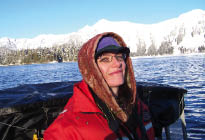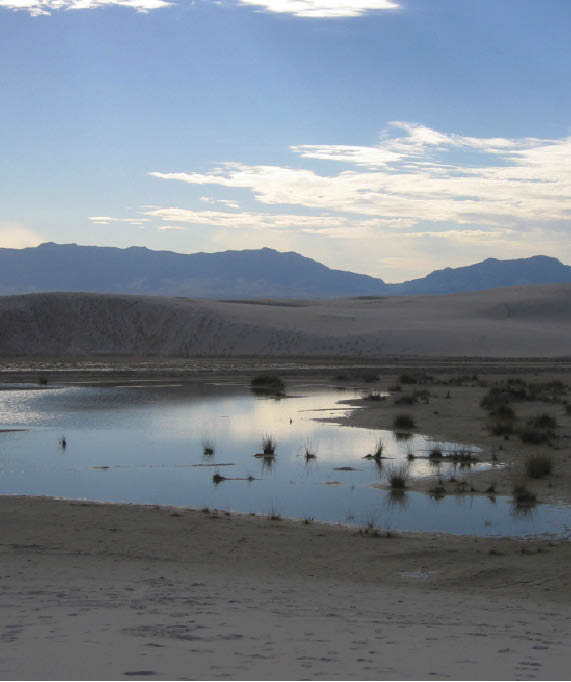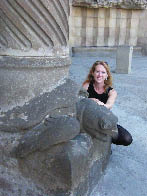Thoreau's Legacy (7 page)
Authors: Richard Hayes

Garden of Ghosts
Mark Hixon
IT HAD BEEN THE MOST BEAUTIFUL OF TROPICAL forests, more a garden really, a rainbow garden of so many colors and shapes and sheer variety of life that it boggled my mind as much as it pleased my senses. The multiple layers of the canopy housed more life—more species—than any other ecological community on earth. And the sheer diversity of growth forms and behaviors and life cycles was overwhelming, regardless of how closely I looked or how far back I stepped to take it all in. The people living nearby thrived on the cornucopia of foods provided by this supremely productive ecosystem. Pharmaceutical corporations discovered dozens of natural chemicals with novel medicinal properties in this forest, including anticancer agents.
I had loved and
studied this Eden
for a decade, marveling at its incredible diversity
while seeking to understand how so many different kinds of creatures could coexist in such density. I learned that it took many species to regulate the abundance of any one species. The amazingly intricate web of interactions lent credence to the idea that complexity begets stability in nature.
But stability can be tenuous, lasting for millennia and then ending abruptly. This kaleidoscopic potpourri of millions of species, born of millions of years of evolution, was no match for the accelerating rate at which modern humans have been warming the global climate with ceaseless carbon emissions. It happened so suddenly. One day all the trees of this grand garden, many of them hundreds of years old, turned as white as snow. But it had not snowed. Quite the contrary: record temperatures had caused the trees to expel the colorful single-celled organisms living symbiotically within their tissues, rendering all surfaces colorless. Exactly why the mutualism collapsed no one knew for sure, except that extremely warm temperatures were the main culprit. Whatever the exact mechanism, all of the ashen trees soon died. They stood in place for years as pallid ghosts, gradually overgrown and drilled by tiny organisms. Then, storm by storm, the standing corpses crumbled and fell, and with them fell the entire web of life they had supported—the richest of ecosystems reduced to a barren plain of rubble.
These were not trees as we know them on land. This cemetery had been my favorite coral reef, the corals being the trees of the ocean rainforest. The reef was killed by the great coral bleaching of 1998, one of the warmest years worldwide ever recorded by humans. Nearly 10 percent of all the coral reefs in the world died in that single terrible year, as did many more in 2005, perhaps the warmest year on record … so far. The remaining reefs face both increased bleaching and ocean acidification, which dissolves the corals’ limestone skeletons as carbon dioxide mixes with seawater and becomes carbonic acid. The rainbow gardens beneath the tropical seas are dying, along with their uncountable goods and services for humans: unparalleled destruction, unseen and unheard, with no end in sight. As a coral-reef scientist, I feel like a caregiver at a cancer hospice.

Mark Hixon,
a professor of marine biology at Oregon State University, has studied coral reefs around the world for thirty years. He enjoys surfing, scuba diving, and beach treks.
Clamming
Katherine McLaughlin
When the tide is out, the table is set.
—Alutiiq saying
DIGGING CLAMS ON THE COBBLESTONE BEACHES OF
Prince William Sound, Alaska, isn’t easy. My son and I are out on the exposed beach of a minus tide, flipping over the seaweed-covered rocks and uncovering a scuttling world of tiny crabs, beach lice, and gunnel fish. We look for the oval holes in the black sand that indicate where the clam’s siphon emerges.
I do the digging while
my little boy picks out
the butter clams and littlenecks
revealed in the widening hole.
As the ridged white shells, some as big as my fist, drop into the bucket, I can almost smell clam chowder simmering on the stove. But a nagging fear is spoiling the moment. For the first time I have to wonder if the clams are contaminated and not safe to eat.
The community was hit hard by the 1989
Exxon Valdez
oil spill. The resulting damage to the ecosystem has been substantial and is still continuing. But oil contamination is not what worries me. My fear is of contracting paralytic shellfish poisoning (PSP), which develops in shellfish that have ingested a toxic form of algae. The saxitoxin, a type of neurotoxin, in PSP-contaminated shellfish is a thousand times more toxic than cyanide.
PSP has been documented in other parts of the state, but the deep, cold waters of Prince William Sound have been historically free of it. However, with global water temperatures rising, researchers believe it may be only a matter of time before toxicity is documented here.
On Alaskan beaches where clams are harvested commercially, the state tests for PSP. But outside of those areas, no testing is done. There have been efforts to produce a test that rural clam diggers could use to determine if PSP is present, but a kit has not yet been certified.
Other types of pathogenic illnesses are appearing in Prince William Sound for the first time. In 2004 an outbreak of gastroenteritis caused by the bacterium
Vibrio parahaemolyticus
made the passengers on a day-tour boat, who ate contaminated oysters from a commercial farm they visited, very uncomfortable for a few days. Tests on shellfish samples taken around the sound showed an uncommonly virulent type of
Vibrio
that had not been previously documented here. Scientists who study invasive species say this may be a sign of new, more severe outbreaks of diseases caused by pathogens.
Chenega Bay has never experienced a “bad clam” episode, but we are now adopting the rule of thumb used in the southeastern United States: harvest shellfish only in the colder months whose names include an r.
It is a cool fall evening, and the clams we are digging should be safe. And we know the symptoms of PSP, just in case. Digging clams will never again be a worry-free endeavor, but we aren’t going to let that stop us from enjoying the bounty of the sea.

Katherine McLaughlin
is an educator and environmental consultant in Chenega Bay, Alaska, where she lives with her husband and son. She is a native of the Gulf Coast of Florida.

III - Open Spaces

A Million and
a Half Acres
Chavawn Kelley
ONE OF THE FIRST T-SHIRTS I REMEMBER MY HUSBAND wearing was a pale blue Beefy-T he’d worn to a holey mess. Above a crude mountain silhouette leered a mean-faced smiling bug. The message read “Feast your eyes on the Wind Rivers.” Shaun loved that shirt because he’d gotten it the year he worked as a backcountry ranger. Only a few were printed, and it was an insider’s joke. Who ever heard of the pine bark beetle munching away at the Wind River Range?
I’d always said I wanted to marry a man who loved the mountains as much as I did. We married in a cottonwood grove, and
for years we lived contentedly, without much trouble from the
pine bark beetle. Eventually we moved to a bigger small town
in Wyoming, one whose skyline encompasses the Snowy Range. When we were joined by an apple-cheeked child in a backpack, sharing the sight of an ice-crusted mountain lake and teaching him to leave a campsite clean became high priorities. He learned to cross-country ski amid sheltering pines, on skis that were barely longer than his father’s forearm.
And now, all across the forest the trees are standing dead. Great swaths of red stain entire mountainsides, miles of forest roads, and views that were green last fall. Dead. And next year there will be more. The outbreak, we are told, is unprecedented. A million and a half acres on a map of Wyoming and Colorado is hardly less comprehensible to me than the present view from Kennaday Peak or the reflection in Silver Lake. Every tree in every direction is dead.
If I tell my son that the pine bark beetle is native to the Rocky Mountains and has long been a part of natural cycles, it does nothing to blunt the loss. Drought and warm winters have set the stage for this attack, which is caused by the insects boring into the bark of their ponderosa and lodgepole hosts to lay eggs and complete their natural life cycle.
Nothing about
this scale of ruin
feels natural. Our forest is a morgue.
The Forest Service publication
What’s Eating the Trees?
says that during a beetle infestation more than fifty years ago, thousands of men walked the forest floor packing five-gallon tanks with hand-pumps, spraying every infested tree with a combination of fuel oil and insecticide, presumably DDT. “All that work didn’t stop the beetle infestation,” it says. “Cold weather in 1952 finally did.” For us, that very cold weather may never return.

Chavawn Kelley
is a corporate communications manager for Western Research Institute. She lives in Laramie, Wyoming, with her bass-playing husband and fiddle-playing son.
